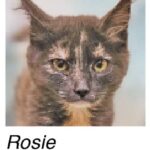Editor’s note: Debra Varnado had an experience causing her to question emergency healthcare on the Hill. She plans to follow up on this issue with your help. Here is her story.
Last Friday night just before bedtime, I stubbed the middle toe on my right foot, leaving it unhinged at an odd angle as if poking fun at its strait-laced neighbors.
The next morning, several hours after the peak pain of my self-inflicted whacking had subsided, I took it upon myself to realign the errant toe.
“Easy enough,” I thought, as my tugging on it during the night had barely registered a “6” on my pain meter. I casually and somewhat nonchalantly reached down and pulled it back in line.
“Ow, Ow, Ow,” I howled, and lost my cookies right there in the bathroom, as my husband sat drinking his morning Joe only feet away in the bedroom.
Horrible, horrible, wretched pain like that of child birth, a whole-body experience, punishing and unrelenting for what seemed like forever.
In a minute, I hobbled my way back to bed, the pain having mellowed to an uncomfortable simmer, after which I dressed, and my husband rushed me off to receive medical care in Idyllwild at 8 a.m. on a Saturday.
There was none to be found. The clinic I had emailed and checked online to verify their weekend service was closed on Saturdays, according to the sign posted on the door.
Back home, I self-medicated with Tylenol PM, applied an ice compact and stayed in bed for the next 24 hours, but could not banish the “What ifs:” “What if I had fallen off of a ladder? What if I were feverish or vomiting? What if I had trouble breathing ...?
“What’s a poor girl to do for medical care in a painful situation like this,” I asked my husband, “one that doesn’t rise to the level of a full-fledged, life-threatening emergency?”
My husband said, “She’d do what any self-respecting ‘mountain woman’ would do: Cuss a little bit, spit on it, rub it and do exactly what you did: Pull it back in place and then go on about her business.”
“So, now I am a bonafide ‘mountain woman.’ That’s alright, not bad after only 13 months living on the Hill.”
Next, I’ll chainsaw that dangerous California live oak overhanging the garage — good for a couple cords; then I’ll rake and haul a couple tons of duff to the dump; and put by some acorns to make meal for the winter. He’ll love it when I shovel the driveway and dig his car out this winter.
But seriously, what are residents and visitors to do for urgent care when the urgent care doctors’ offices are closed on the Hill?
Must they grouse, cry out in horrific pain, and then go to the fire department or drive down the Hill to Hemet or Banning?
Is access to urgent care adequate on the Hill or do Hill residents need additional service providers? Is it uncommon for several people to need urgent care on a Saturday morning, i.e., as my husband and I and two other people did last Saturday as we arrived simultaneously at the clinic?
Is demand high enough for… a hospital? How is urgent care managed in rural areas similar to Idyllwild, miles away from the nearest hospital?
Is the medical system on the Hill — urgent care and otherwise — optimal for the size and demographics of the population? If not, how can it be fixed?
These questions disturbed me as I tried lounging in bed, icing my toe, watching the awkward sex-play of this spring’s juvenile squirrels on the deck; and working my way through Ken Follett’s “A Column of Fire” tome. I could hardly enjoy my newly minted status as a real “mountain woman.”
The author will pursue answers to these questions in future articles and would enjoy hearing your ideas regarding urgent care and general medical care on the Hill. You may share your confidential personal experiences and helpful comments and suggestions at: [email protected] or send private messages on Facebook to Debra A. Varnado.










